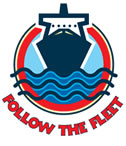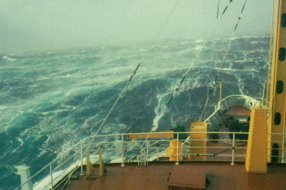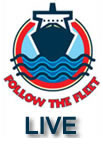|
STORM |
|||||||||||||||||||||||||||
| A storm produces very high waves, possibly 9 metres high. The waves have long overhanging crests. Large patches of foam are blown in dense white streaks along the direction of the wind. The surface of the sea takes on a white appearance. The 'tumbling' of the sea becomes heavy and shock-like. Visibility is also affected. | ||||||||||||||||||||||||||||
|
||||||||||||||||||||||||||||
|
||||||||||||||||||||||||||||
|
||||||||||||||||||||||||||||
The speed of the wind is between 48 and 55 knots. Remember that a knot is one nautical mile (nm) per hour. A nautical mile is the traditional way of measuring distances at sea. It is equal to A storm is called Wind Force 10 on the Beaufort Wind Force Scale. We will |
||||||||||||||||||||||||||||
Click below to learn more about storms |
||||||||||||||||||||||||||||
|
||||||||||||||||||||||||||||
|
||||||||||||||||||||||||||||
|
||||||||||||||||||||||||||||
Quiz |
||||||||||||||||||||||||||||




